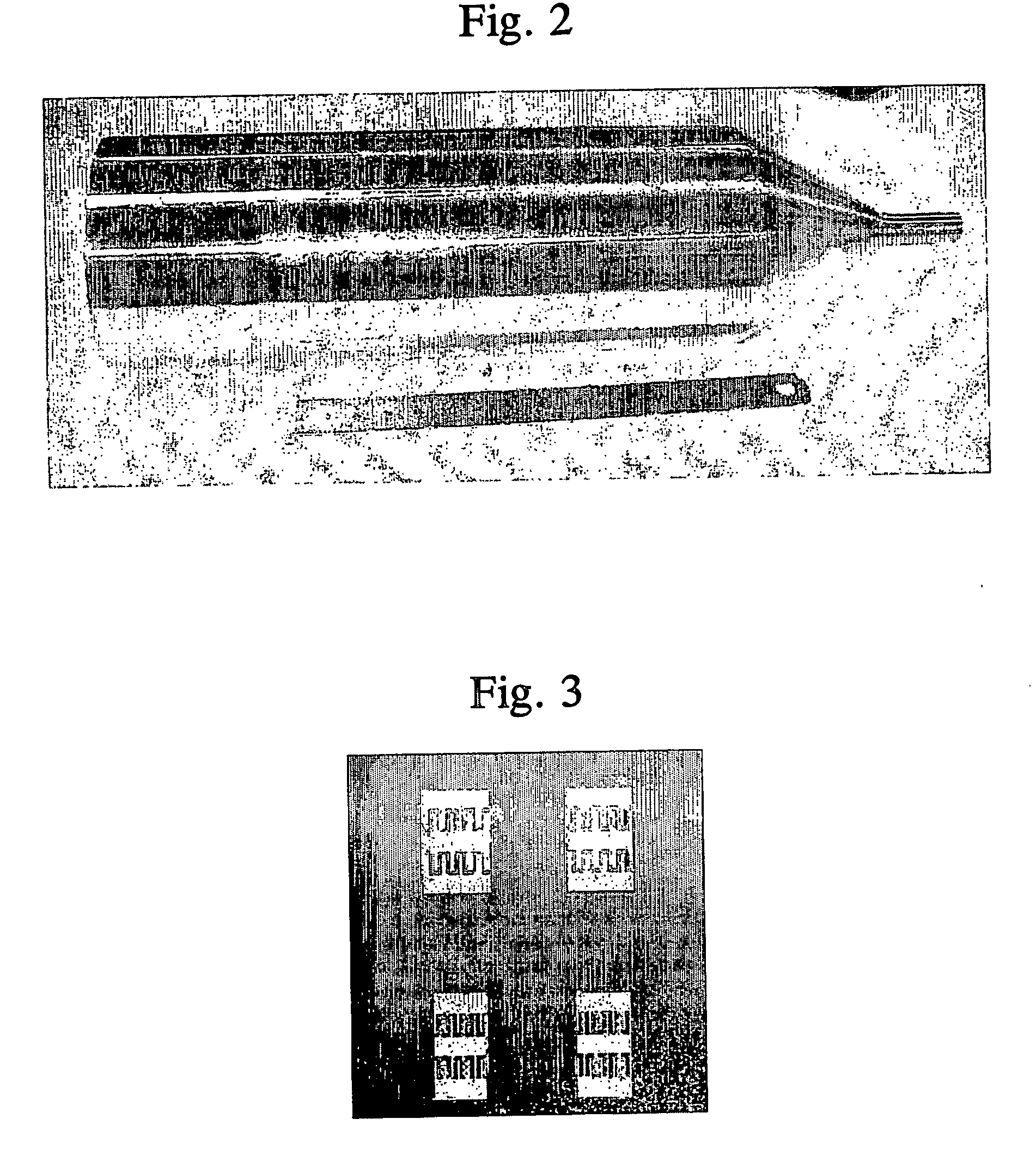Ferroelectric ceramic compound, a ferroelectric ceramic single crystal, and preparation processes thereof
a technology of ferroelectric ceramic and compound, which is applied in the direction of niobium compounds, lead oxides, device material selection, etc., can solve the problems of single crystal not being commercialized heretofore, difficult to grow to a commercially applicable single crystal having a diameter of 5 cm (2 inches) or greater, and achieve low dielectric loss, improve the uniformity of inside temperature, and high non-linearity of permittivity
- Summary
- Abstract
- Description
- Claims
- Application Information
AI Technical Summary
Benefits of technology
Problems solved by technology
Method used
Image
Examples
example
Ferroelectric Ceramic Compound and Preparation of a Single Crystal Thereof
[0046] Raw materials in the [L] reaction step listed in Table 1 below, which shows components of a ferroelectric single crystal of the present invention, were measured and mixed. The mixture was pulverized and mixed using ethanol as a dispersion medium in a 0.5″ zirconia ball mill. Then, the resultant mixture was dried in an electric furnace controlled at the temperature of 150° C. The dried mixture was calcined in a capped alumina crucible with a lid at the temperature of 1,600° C. for 6 hours to complete the first reaction. The calcined material obtained this way was uniformly pulverized again by using the ball mill. The first resultant reactants obtained in the above way was subjected to the [P] composition step and then calcined in the capped alumina crucible at the temperature of 920° C. for 4 hours to complete the second reaction.
[0047] The obtained ceramic powder was charged into a platinum crucible t...
experiment 1
Test of Electromechanical and Piezoelectric Performance for Manufacturing a Medical Ultrasonic Diagnosis Apparatus
[0048] To measure properties necessary for fabrication of a transducer for an ultrasonic diagnosis apparatus using the single crystal obtained in the example, both sides of the single crystal was polished to have a thickness of 0.5 mm and then cleaned using a ultrasonic cleaner. Thereafter, chrome electrodes of 15 mm×5 mm were formed on the both sides by using a DC magnetron sputter (Model KVSC T5050, a product of Korea Vacuum Science).
[0049] The dielectric constant and dielectric loss of the single crystal were calculated based on capacitance and dissipation measured at 1 kHz and 0.5 Vrms using HP 4192A LF impedance analyzer (available from Hewlett-Packard Co.). Further, as for the piezoelectric property, an electric field of 4 kV / cm was applied to the single crystal at 120° C. for 30 minutes for crystal polarizing. Thereafter, the electromechanical coupling coefficie...
experiment 2
Fabrication and Test of a Variable Capacitor for use in Manufacturing Tunable Filters for Radio Communication
[0052] Two types of coplanar capacitor and interdigital capacitor (IDC) were used. An IDC structure formed on a single crystal substrate of the present invention shown in FIG. 3 has an advantage in that its capacitance can be increased if a strong electric field is applied thereto by reducing the spacing between electrodes. However, the IDC structure has a disadvantage in that it is modeled as a complex equivalent circuit. A surface of a substrate using the piezoelectric single crystal prepared in the example was subjected to ultrasonic cleaning at 40° C. for 20 minutes in a solution comprising 5% of DECONEX and 95% of deionized water that is widely used for removing organics, rinsed and cleaned again by a conventional semiconductor surface cleaning process.
[0053] On the cleaned surface of the single crystal, an aluminum alloy (Al-0.5%Cu) was deposited at a thickness of abo...
PUM
 Login to View More
Login to View More Abstract
Description
Claims
Application Information
 Login to View More
Login to View More - R&D
- Intellectual Property
- Life Sciences
- Materials
- Tech Scout
- Unparalleled Data Quality
- Higher Quality Content
- 60% Fewer Hallucinations
Browse by: Latest US Patents, China's latest patents, Technical Efficacy Thesaurus, Application Domain, Technology Topic, Popular Technical Reports.
© 2025 PatSnap. All rights reserved.Legal|Privacy policy|Modern Slavery Act Transparency Statement|Sitemap|About US| Contact US: help@patsnap.com



